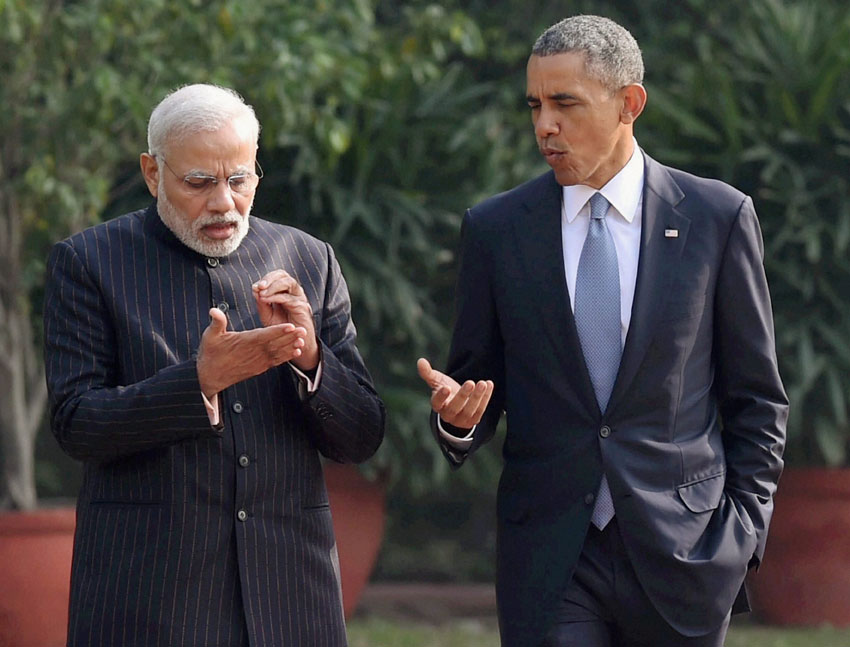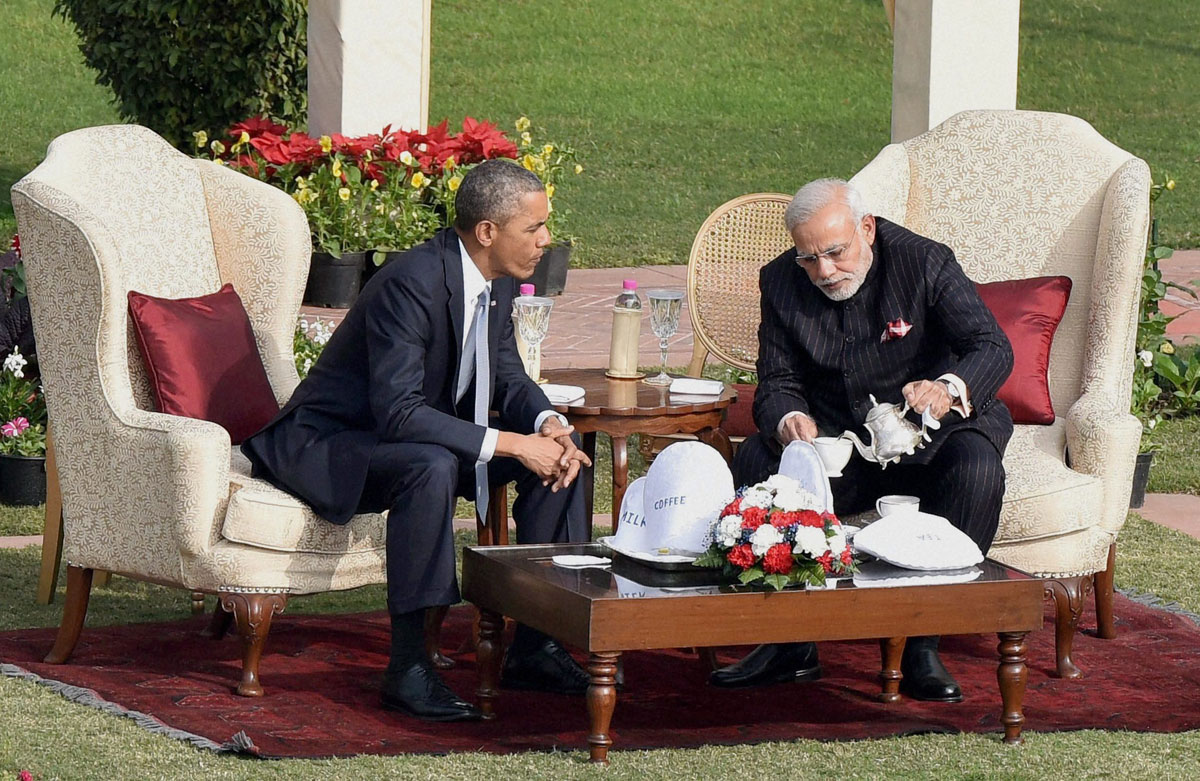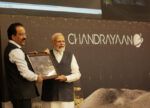NUCLEAR DEADLOCK ENDS
Prime Minister Narendra Modi pouring tea for U.S. President Barack Obama during their talks at Hyderabad House in New Delhi, Jan. 25. (Shirish Shete | PTI)
Prime Minister Narendra Modi and U.S. President Barack Obama have announced the end of six-year-old deadlock over operationalizing the landmark civil nuclear deal signed between the two countries in 2008, writes Siddharth Srivastava.
The agreement that was signed following a three-hour meeting between the two leaders in New Delhi, Jan. 25, could well be the template that will be followed by other countries keen to engage with India’s nuclear sector. The deal could also pave the way for a possible civil nuclear agreement between India and Japan, a country that sets stringent parameters to engage in bilateral atomic trade. This is important as most U.S. suppliers have tie-ups with Japanese entities to manufacture reactors. President Obama is in India for a three-day visit.

“I am pleased that six years after we signed our bilateral agreement, we are moving towards commercial cooperation, consistent with our laws and international legal obligations,” Modi said. Addressing reporters, Obama said there had been a “breakthrough understanding on two issues that were holding up our ability to advance our civil nuclear cooperation,” and the two countries were “committed to moving towards full implementation.” Their joint statement welcomed “the understandings reached on the issues of civil nuclear liability and administrative arrangements for civil nuclear cooperation.”
Delving into more details, U.S. Ambassador to India Richard Verma told reporters, “The new deal resolved differences over the liability of suppliers to India in the event of a nuclear accident and U.S. demands on tracking the whereabouts of material supplied to the country. Ultimately its up to the companies to go forward, but the two governments came to an understanding.”
Regarding India’s nuclear liability law, the differences with USA and also with other nations such as France and Russia have pertained to making equipment suppliers ultimately responsible for a mishap, instead of the primary liability lying with the operator. All nuclear power plants in India are operated by the government via the state-owned Nuclear Power Corporation of India (NPCIL).
As New Delhi has ruled out amendments in its 2010 liability legislation, it would seem that America has agreed to the alternative that has been offered by the Indian government.
And that is to form an insurance pool backed by state-owned insurers to indemnify entities that build reactors in India against liability in case of a nuclear accident, which is expected to raise the price of nuclear power that is generated. The U.S., it appears, has accepted New Delhi’s assurance that suppliers wouldn’t be vulnerable to lawsuits under other Indian civil laws. Washington, it seems, has also decided to withdraw the clause that permits tracking of nuclear material supplied to India to ensure that it is deployed only for civilian purpose and not to make weapons. The end use clause was a major irritant as it is politically infeasible for any Indian government to allow American inspectors access to Indian nuclear assets.
It would have been seen as an infringement of India’s sovereignty. India has, however, committed to more intrusive verification by IAEA by signing the Additional Protocol. New Delhi has also offered to provide all information it passes to IAEA to U.S.
Following the Modi-Obama agreement, Washington, it appears has decided to drop the tracking clause. It was America, under U.S. President George Bush, that pushed for global acceptance of India as an atomic exception, despite being non-signatory of the nuclear non-proliferation treaty or NPT. This allowed the country to trade in nuclear equipment and fuel. India has still not signed the NPT.
No doubt, the nuclear agreement with America is also a signal that atomic energy continues to be a crucial element in the Modi’s government’s quest to provide electricity for all.
Over the recent past, doubts were expressed that Modi may jettison India’s ambitious nuclear plans, that were set in motion by previous Prime Minister Manmohan Singh, for renewable and thermal power.
India’s power and coal minister Piyush Goyal recently said the government continues to be “cautious” about tapping nuclear power for electricity generation despite its potential as a clean energy source.
“I am told even America hasn’t set up a nuclear plant in the last 30 years. Many European countries are discontinuing (use of nuclear energy). This government would like to be cautious so that we are not saddled with something only under the garb of clean energy or alternate energy; something which the West has discarded and is sought to be brought to India,” Goyal said.
Presently, India operates 20, mostly small, reactors with capacity of 4780 MW, or 2% of the country’s total power capacity. The aim is to increase nuclear capacity to 63,000 MW by 2032 by adding nearly 30 reactors that offers a massive business opportunity.
Manmohan signed the civil nuclear deal with America, in 2008. Contracts were promised to U.S. entities such as GE and Westinghouse, France’s Areva and Russia’s Atomstroyexport. However, there has been progress only at Kudankulam in Tamil Nadu where two reactors have been set up by Russia. None of the other plans have materialized.


